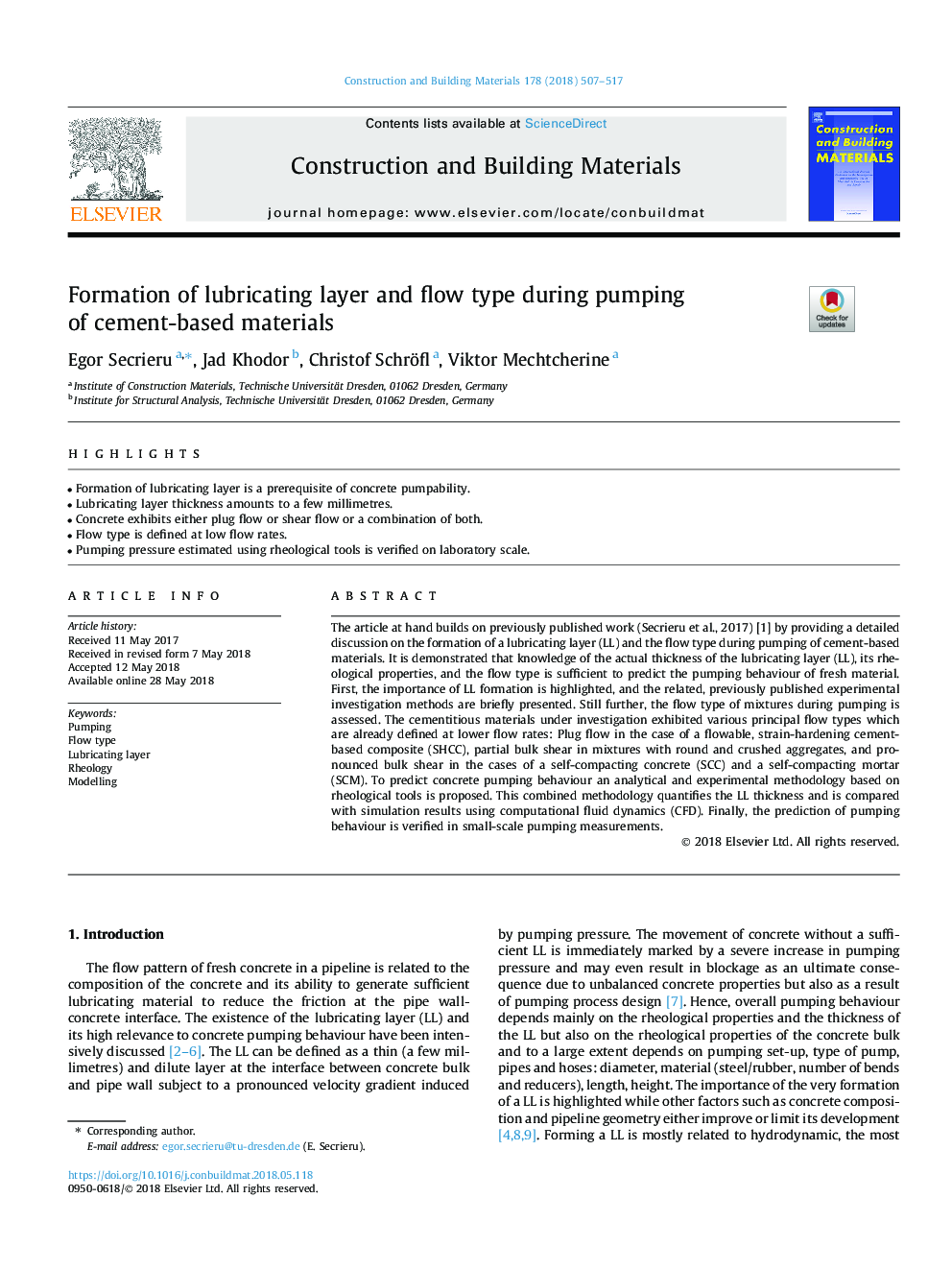| Article ID | Journal | Published Year | Pages | File Type |
|---|---|---|---|---|
| 6712929 | Construction and Building Materials | 2018 | 11 Pages |
Abstract
The article at hand builds on previously published work (Secrieru et al., 2017) [1] by providing a detailed discussion on the formation of a lubricating layer (LL) and the flow type during pumping of cement-based materials. It is demonstrated that knowledge of the actual thickness of the lubricating layer (LL), its rheological properties, and the flow type is sufficient to predict the pumping behaviour of fresh material. First, the importance of LL formation is highlighted, and the related, previously published experimental investigation methods are briefly presented. Still further, the flow type of mixtures during pumping is assessed. The cementitious materials under investigation exhibited various principal flow types which are already defined at lower flow rates: Plug flow in the case of a flowable, strain-hardening cement-based composite (SHCC), partial bulk shear in mixtures with round and crushed aggregates, and pronounced bulk shear in the cases of a self-compacting concrete (SCC) and a self-compacting mortar (SCM). To predict concrete pumping behaviour an analytical and experimental methodology based on rheological tools is proposed. This combined methodology quantifies the LL thickness and is compared with simulation results using computational fluid dynamics (CFD). Finally, the prediction of pumping behaviour is verified in small-scale pumping measurements.
Related Topics
Physical Sciences and Engineering
Engineering
Civil and Structural Engineering
Authors
Egor Secrieru, Jad Khodor, Christof Schröfl, Viktor Mechtcherine,
